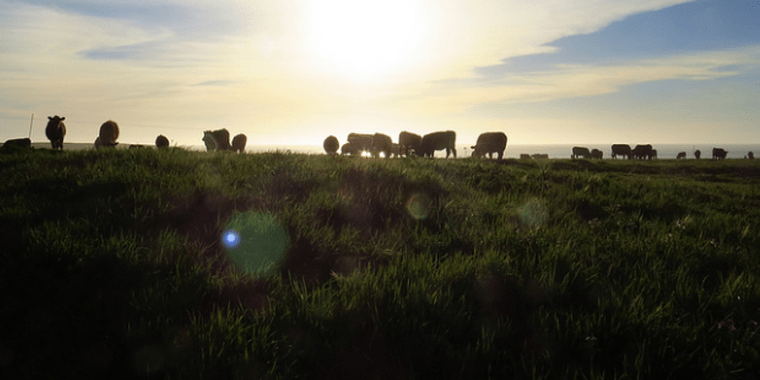The Federal grazing fee for 2020 will be $1.35 per animal unit month (AUM) for public lands administered by the Bureau of Land Management and $1.35 per head month (HM) for lands managed by the USDA Forest Service. The 2019 public land grazing fee was $1.35.
An AUM or HM—treated as equivalent measures for fee purposes—is the use of public lands by one cow and her calf, one horse, or five sheep or goats for a month. The newly calculated grazing fee was determined by a congressional formula and takes effect March 1, 2020. The fee will apply to nearly 18,000 grazing permits and leases administered by the BLM and nearly 6,250 permits administered by the Forest Service.
The formula used for calculating the grazing fee was established by Congress in the 1978 Public Rangelands Improvement Act and has remained in use under a 1986 presidential Executive Order. Under that order, the grazing fee cannot fall below $1.35 per AUM/HM, and any increase or decrease cannot exceed 25 percent of the previous year’s level.
The annually determined grazing fee is established using a 1966 base value of $1.23 per AUM/HM for livestock grazing on public lands in Western states. The figure is then calculated according to three factors—current private grazing land lease rates, beef cattle prices, and the cost of livestock production. In effect, the fee rises, falls, or stays the same based on market conditions.
The BLM and Forest Service are committed to strong relationships with the ranching community and work closely with permittees to ensure public rangelands remain healthy, productive working landscapes. To better serve the American public, the BLM has initiated development of an Environmental Impact Statement to consider proposed revisions to its grazing regulations, with the goal of updating, modernizing and streamlining existing grazing regulations and providing greater flexibility for land and resource management. This effort will not affect the 2020 grazing fees announced today.
Fifty percent of the collected grazing fees deposited into the U.S. Treasury are returned to the Range Betterment Fund for on-the-ground range improvement projects. Portions of collected fees are also returned to the states for use in the counties where the fees were generated.
The grazing fee applies in 16 Western states on public lands administered by the BLM and the Forest Service. The states are: Arizona, California, Colorado, Idaho, Kansas, Montana, Nebraska, Nevada, New Mexico, North Dakota, Oklahoma, Oregon, South Dakota, Utah, Washington, and Wyoming. Permit holders and lessees may contact their local BLM or Forest Service office for additional information.
####
Bureau of Land Management – US Forest Service
Northern Ag Network – 2020



I wish I could lease grass at that rate. I pay that much in property taxes for my grazing land. Seems low to me, but I can’t imagine the agencies can even pay their expenses at that rate? Would respect the system a lot more if the rate was $8 to $15 per AUM. The current rate is definitely not market compared to the $30 clear up to $40 per AUM out in the regular market! I think the general public would find current Federal Rate joke or else a great subsidy to some ranchers but not all.
I totallyxagree with you Todd what producer wouldn’t want to pay 1.35 per pair per month that is stupid, and the big huge ranchers that have most of the forest tied up for grazing make alot more money come sale day than we do.
Alf
That is less than one pound of calf to feed both momma cow and calf for a month, again he public is getting robbed by a few. Maybe they should go to an auction type of lease instead. This should be made public for everybody to know. I’m sure the USFS and the BLM could make good use of the money for needed improvements or fighting fires.